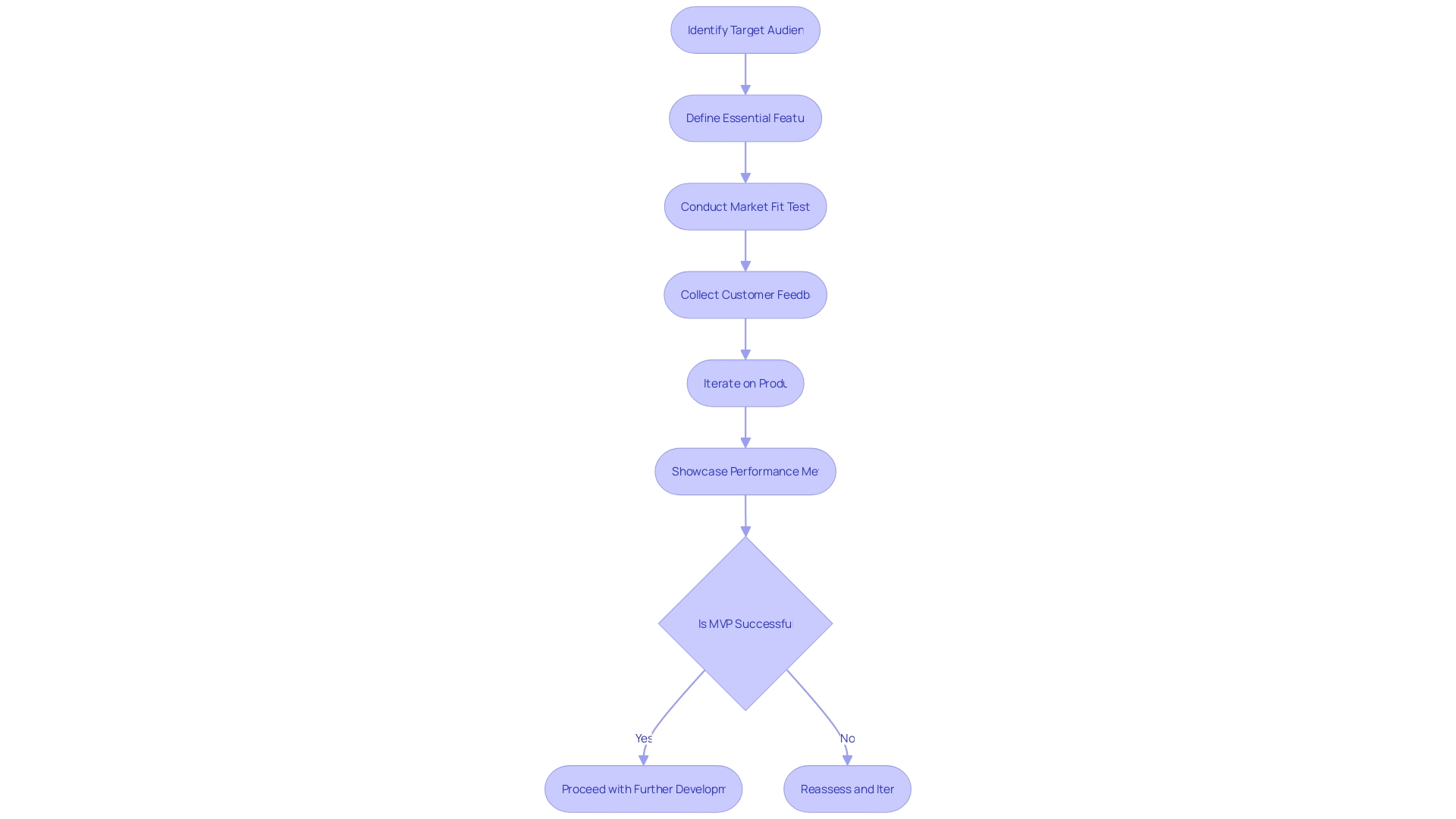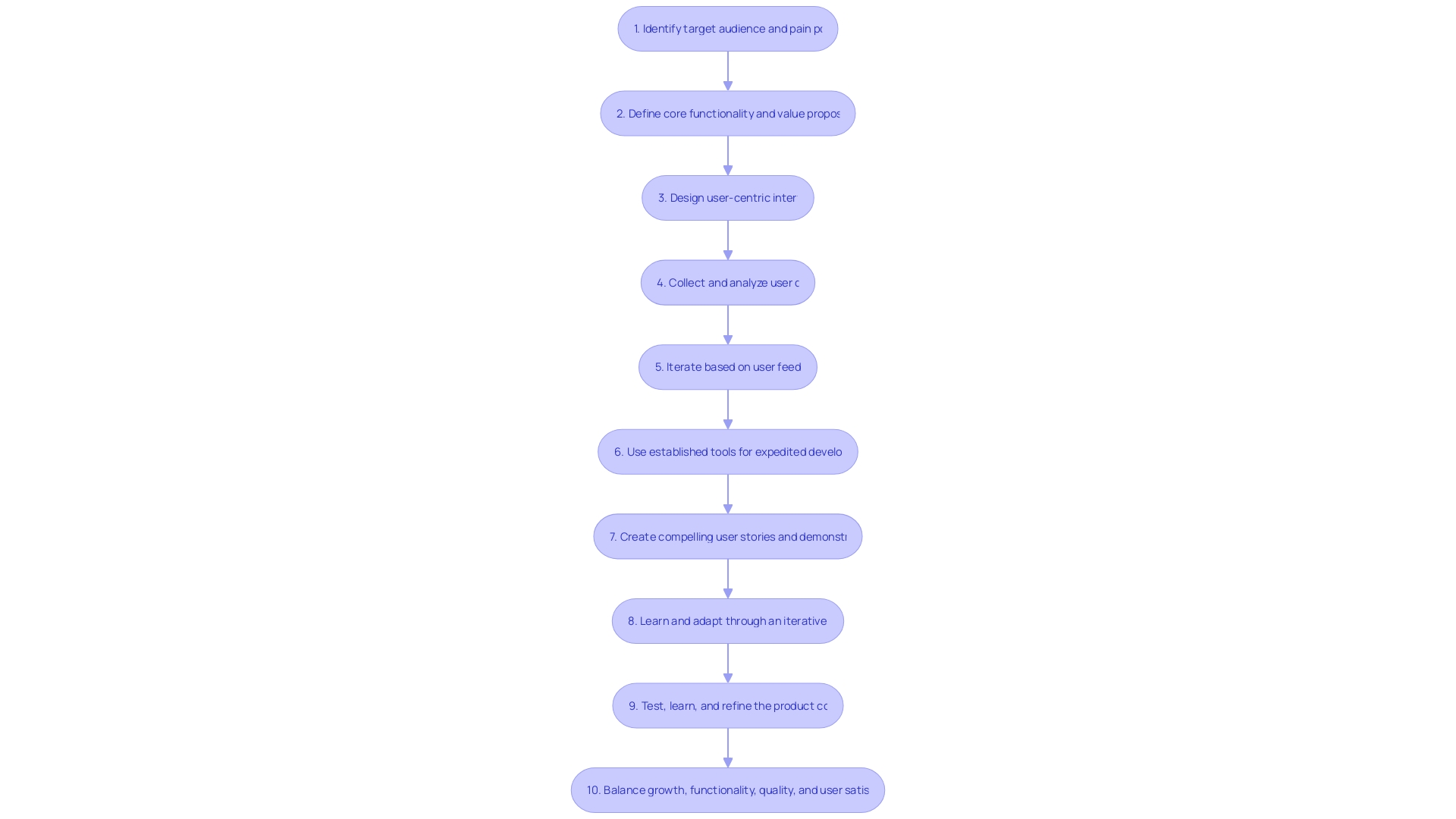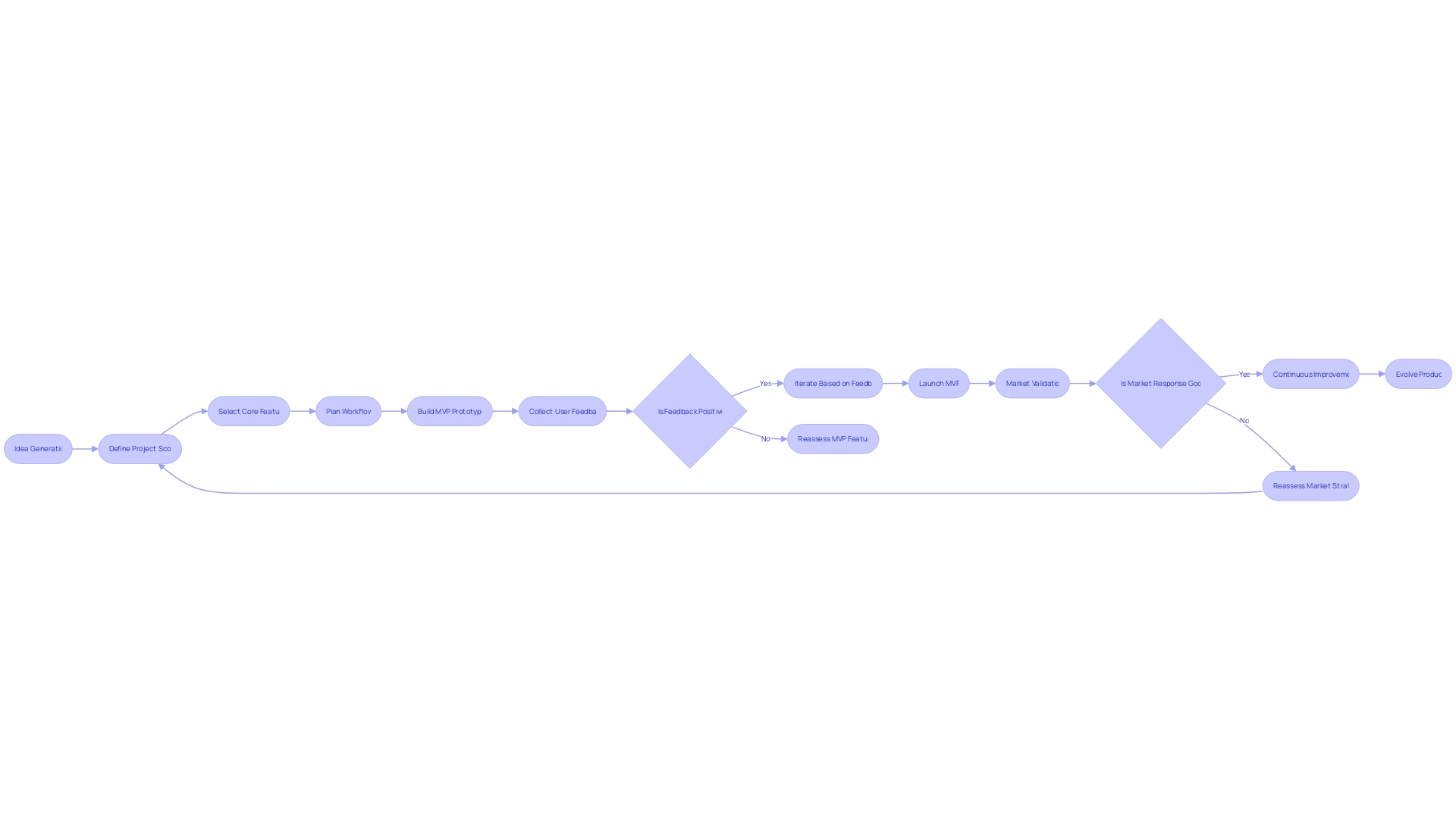Introduction
A Minimum Viable Product (MVP) is a strategic approach in software development that focuses on creating a basic yet functional iteration of a product. By incorporating only the essential features that address the most critical needs of the target audience, an MVP aims to offer a value proposition that resonates with early adopters.
Launching an MVP early in the development phase allows for the collection of invaluable customer feedback, which validates the business concept and informs subsequent iterations. In this article, we will explore the key characteristics of an MVP, the benefits of implementing MVPs, how to set up an effective MVP, successful examples of MVPs, and the process of developing an MVP. By following this approach, software startups can balance growth with functionality, quality, and user satisfaction, ultimately propelling their products towards success in a competitive landscape.
What is MVP in Software Development?
A Minimum Viable Product, commonly abbreviated as MVP, is a strategic approach in software development where the primary objective is to craft a basic yet functional iteration of a product. This initial version incorporates only the essential features that address the most critical needs of the target audience.
By focusing on the core functionalities, the MVP seeks to offer a value proposition that resonates with early adopters. The use of an MVP is a deliberate measure to mitigate risk and enhance the likelihood of creating a successful product through rigorous market fit testing.
Launching an MVP early in the development phase allows for the collection of invaluable customer feedback, which serves to validate the business concept and inform subsequent iterations. This continuous loop of feedback and refinement not only sharpens the software's alignment with user requirements but also significantly reduces the risk of expensive developmental missteps and resource wastage.
The process of developing an MVP can typically be completed within a span of 12 to 16 weeks, which is a stark contrast to the six months to two years that full product development might demand. It necessitates a clear understanding of the project's scope, the necessary feature set, and the complexities inherent in the technology being built. Demonstrating the MVP to potential users through a compelling user story and hands-on demonstrations is critical, as it illustrates the practicality and benefits of the product. Furthermore, showcasing the MVP's performance through key metrics can bolster negotiations with investors, providing them with assurance that the solution is effective and well-received by the market. In essence, MVPs are indispensable in custom software development, ensuring that the final product is not just functional but also finely attuned to user needs and market demands.

Key Characteristics of an MVP
In the realm of software development, the concept of a Minimum Viable Product (MVP) is a beacon for efficiency and effectiveness. An MVP embodies a minimalistic approach, delivering just the core functionality that represents the product's value proposition, without superfluous features that may cloud its purpose.
The design is user-centric, prioritizing the needs and pain points of the target audience to ensure that the product resonates with its intended users. Moreover, rapid iteration is a hallmark of MVP development, with frequent updates shaped by user feedback, fostering continuous improvement and optimization.
A data-driven decision-making process underpins the MVP approach. This involves meticulous collection and analysis of user data to guide the future trajectory and enhancements of the product.
By focusing on essential features and leveraging established tools, MVPs can be brought to life in a time frame of 12 to 16 weeks. This expedited development cycle not only saves time, which could range from six months to two years for full-fledged products, but also allows for the creation of compelling user stories and hands-on demonstrations that showcase the product's utility to customers and investors alike.
The iterative nature of MVP development is a journey of learning and adaptation. As one industry expert put it, "Building an MVP is a significant challenge that goes beyond technical development, involving a deep understanding of the product and user needs." This iterative cycle is not without its risks, as it may result in building something that cannot be easily transitioned into the final product. However, when the cost of building the MVP is low, or financial resources are constrained, the MVP model remains a valuable strategy to test, learn, and refine a product concept. In the current market, where growth is increasingly challenging to achieve, MVPs stand out as a strategic choice for software startups aiming to balance growth with functionality, quality, and user satisfaction. By adhering to the principle of delivering value swiftly and refining it based on real-world use, the MVP framework propels software products towards success in a competitive landscape.

Benefits of Implementing MVPs
The practice of developing a Minimum Viable Product (MVP) can substantially reduce the time from conceptualization to market entry, typically taking between 12 to 16 weeks. This expedited timeline is a testament to the strategic focus on essential features and a deep understanding of project scope and technological complexity.
For instance, Crypto Use Pay, a cryptocurrency payment gateway, exemplifies the MVP approach by prioritizing a clear visual representation of the product's user journey and essential functionalities. By presenting a tangible prototype, users can experience the product's capabilities firsthand, which is instrumental in securing customer buy-in and investor interest.
Cost efficiency is another critical advantage of MVPs, as they prevent resource allocation to superfluous features. The prioritization of core functionalities not only streamlines development but also aligns closely with user expectations, ensuring that the product resonates with its intended audience.
Furthermore, the iterative nature of MVP development embraces the reality of software maintenance, allowing for corrective actions post-deployment that are informed by actual user feedback. This continuous refinement process is pivotal in adapting the product to evolving market needs, thereby reducing the risk of obsolescence or market misalignment. Lastly, the custom software engineering approach inherent in MVPs empowers businesses with control over the development lifecycle, from ideation to integration, and beyond. The ownership of the final product means no recurring costs, such as subscriptions or licenses, thus promising reduced long-term expenditures. With the goal of creating an impactful user story and delivering a competitive edge in the marketplace, MVP development stands as a strategic choice for businesses aiming to innovate swiftly and effectively.
Setting Up an Effective MVP
Crafting an MVP, or Minimum Viable Product, is a streamlined approach to software development that focuses on delivering core functionality to users quickly and efficiently. Begin by putting your plans on paper, visualizing your product through sketches, and conducting a feature analysis.
This preparatory work should aim to crystallize the project scope, which can span from 12 to 16 weeks, significantly less than the 6 months to 2 years it might take for full product development. Identify the most valuable core functionality that your MVP will offer.
This is the heart of your product, around which you can build an incredible user story. Remember, the goal is not to present a feature-heavy product but to provide a clear demonstration of how the idea can resolve user challenges.
Once launched, collect user feedback diligently and be ready to enter a cycle of iteration. Real-world case studies, like the development of a cryptocurrency payment gateway, underline the importance of focusing on essential functionalities.
The process involves continuous learning and problem-solving, as emphasized by industry professionals: 'Iteration is key. Just code it.' To support your MVP journey, consider recent findings that highlight the importance of a well-structured engineering team. Data from over 900 sources show that companies are increasingly valuing the roles of engineering management and leadership, which are critical in guiding the MVP development process. Remember, building an MVP goes beyond coding. It's about understanding your product and its users, and being ready to adapt and improve upon your initial offering, creating a product that resonates with users and aligns with market needs.
Examples of Successful MVPs
From the genesis of Dropbox as a straightforward file-sharing service to its evolution into a cloud storage leader, the journey of MVPs to full-fledged products is marked by continuous improvement and responsiveness to customer needs. Similarly, Airbnb's humble beginnings as a platform for renting out spare rooms transformed into a global accommodation marketplace, a testament to the scalability that can be achieved by starting with an MVP. Instagram, too, began with the simple concept of photo-sharing and has since burgeoned into a massive social media network, all by building upon user insights and adapting to market demand.
These success stories underscore the merit of launching with a minimum viable product. Companies like Better Legal have demonstrated the effectiveness of MVPs, having started with a fusion of No-Code tools to address a niche market, and then iteratively building a more sophisticated system with custom code to cater to growing operational needs. In the world of tech entrepreneurship, such as those that braved the 'Shark Tank' without a deal, the MVP approach has proven valuable, providing the exposure and validation needed to scale operations and attract investment.
Embracing simplicity, focusing on the core value proposition, and leveraging free resources are strategies that have propelled products from a basic MVP to achieving milestones like $1 billion in valuation, revenue, and cash flow, signifying bold vision, market acceptance, and business model validation. The resilience and ingenuity displayed by these companies align with the notion that in software development, competence is a pursuit that can be achieved through talent and dedication rather than solely through formal education. As the software industry continues to democratize, the narrative of starting small with an MVP and scaling with precision remains a beacon for aspiring entrepreneurs and established developers alike.
Breaking Down the MVP Development Process
Developing an MVP, or Minimum Viable Product, is a strategic process that transforms a nascent idea into a functional product ready for market validation. It begins with meticulously defining the project's scope and pinpointing the core features that will comprise the MVP.
These features are the backbone of the product, carefully selected to fulfill the user's primary needs without unnecessary complexity. Next, the workflow is meticulously planned, and development tasks are divided into manageable components.
This division not only streamlines the development process but also aids in maintaining focus on delivering a cohesive product. Prototyping then serves as a crucial step to materialize the idea, providing a tangible experience to evaluate design and functionality.
This prototype is a critical tool for gathering early user feedback, which is indispensable for refining the product. Following the launch, user feedback becomes the catalyst for iteration.
This feedback is not merely collected but analyzed in depth, informing the subsequent iterations of the product. This cycle of feedback and improvement is vital, ensuring that each iteration brings the MVP closer to what users truly want and need.
The journey doesn't end with the MVP; it evolves. Post-validation, the product continues to grow, shaped by ongoing user feedback and market demands. This growth is informed by a clear understanding of the project scope, feature set, and the technological intricacies involved in development—a process that can be accomplished within an impressive timeframe of 12 to 16 weeks. In the words of an entrepreneur developing Crypto Use Pay, 'It's essential to visualize precisely what you are going to build.' The MVP journey is not just about building a product but also about crafting a compelling user story that demonstrates how the product can enrich the customer's life. This narrative is pivotal in engaging both users and investors, showcasing the product's potential impact through hands-on demonstrations.

Conclusion
In summary, a Minimum Viable Product (MVP) is a strategic approach in software development that focuses on delivering a basic yet functional iteration of a product. By incorporating only the essential features that address the most critical needs of the target audience, an MVP aims to offer a value proposition that resonates with early adopters.
The key characteristics of an MVP include minimalism, user-centric design, rapid iteration, and data-driven decision-making. Implementing MVPs brings several benefits such as reducing time to market entry, ensuring cost efficiency, and allowing for post-deployment refinements based on real-world feedback.
To set up an effective MVP, it is crucial to define the project scope, identify valuable core functionality, collect user feedback diligently, and enter a cycle of iteration. Real-world examples like Dropbox, Airbnb, and Instagram demonstrate the transformative power of starting with an MVP and continuously improving based on user insights.
The MVP development process involves meticulously defining project scope, planning workflow, prototyping for early feedback gathering, launching with continuous user feedback analysis driving further iterations. The journey doesn't end with the MVP; it evolves based on ongoing user feedback and market demands. In conclusion, embracing the MVP approach is a strategic choice for software startups aiming to balance growth with functionality, quality, and user satisfaction. By delivering value swiftly and refining based on real-world use, businesses can propel their products towards success in a competitive landscape.





